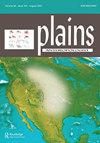Phipps Site Ceramics: A Typological, Morphological, and Contextual Analysis of a Mid-twentieth Century Legacy Collection
Q2 Social Sciences
引用次数: 0
Abstract
frameworks for exploring social organization, political leadership and ideology, cultural contact, and ethnicity” (p. 1), which is notably ambitious for a relatively short book (171 pages of text). However, it is well edited and succinct with contributed chapters of uniformly high quality and an engaging writing style. Although of obvious interest to those involved directly with Central Plains archaeology, this book also has value to a broad audience of archaeologists seeking comparative case studies and insights into the archaeology of specific descendant Indigenous groups such as the Pawnee and Kanza. Beck’s chapter looking at Puebloan–Plains interactions usefully expands the geographic scope of the volume, and Hill and Ritterbush’s thoughtful concluding remarks will likely be cited often by future authors exploring Central Plains archaeology topics.菲普斯遗址陶瓷:20世纪中期遗产收藏的类型学、形态学和语境分析
探索社会组织、政治领导和意识形态、文化接触和种族的框架”(第1页),对于一本相对较短的书(171页的文本)来说,这本书显然雄心勃勃。然而,它编辑得很好,简洁,贡献了统一的高质量章节和引人入胜的写作风格。虽然对那些直接参与中原考古的人明显感兴趣,这本书也有价值的考古学家寻求比较案例研究和深入了解具体的后代土著群体考古,如波尼和坎扎。贝克关于普韦布洛人和平原人相互作用的章节有效地扩展了这本书的地理范围,希尔和里特布什深思熟虑的结语可能会被未来探索中原考古主题的作者经常引用。
本文章由计算机程序翻译,如有差异,请以英文原文为准。
求助全文
约1分钟内获得全文
求助全文

 求助内容:
求助内容: 应助结果提醒方式:
应助结果提醒方式:


